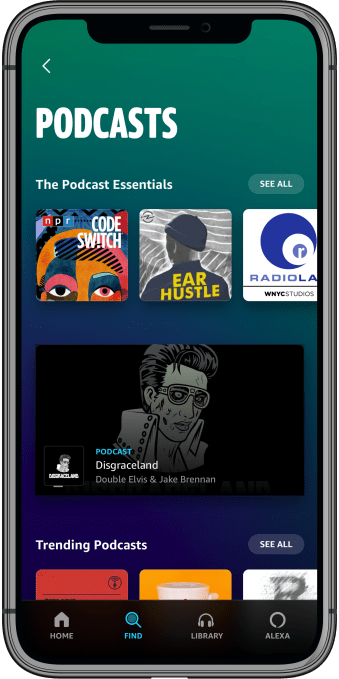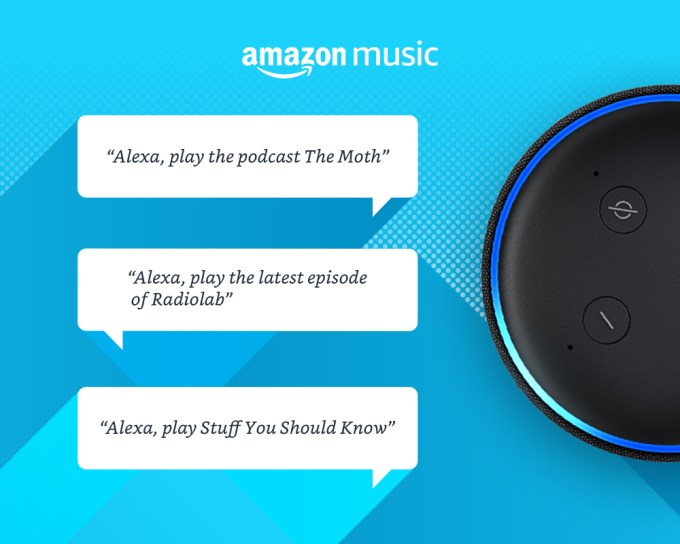Mauro Guillen
Contributor
Mauro Guillen is a professor of international management at the Wharton School and the author of “2030: How the Biggest Trends Today will Collide and Shape the Future of Everything,” from which this essay is adapted.
There’s a growing sense of urgency when it comes to ensuring that stimulus checks and election ballots reach their recipients on a timely basis. The economic recovery and the future of our democracy hinges on that. Yet, we’re using a technology invented by the ancient Egyptians more than 4,000 years ago, later perfected by the Chou dynasty in China and by Cyrus, the emperor of Persia. Organizing a modern postal system was one of the key decisions made by the Second Continental Congress in 1775. In the digital age, however, does it make sense to mail checks and ballots as if they were tangible products like medicines or shoes?
The main advantage of postal systems is that they can potentially reach the entire population. By contrast, not everyone has a smartphone or a reliable Wi-Fi connection, or feels confident about using them. Still, the last few months have amply demonstrated that the American financial and election infrastructures are not up to speed. More than two months after the CARES Act was enshrined into law, 30-35 million stimulus checks — about 20% of the total — had not yet been issued to their intended recipients, according to the U.S. Congress. Meanwhile, results from several primary elections were delayed by days or even weeks in states like New York, New Jersey, Kentucky and Georgia given the avalanche of votes by mail.
The solution to many of these quandaries could come from the world of cryptocurrencies or, to be more precise, the technology underlying them. Progress in their adoption has been thwarted by government officials, monetary authorities, and bankers in the U.S. and abroad, who have swiftly come to the rescue of legal tender, predicting nothing short of economic and financial apocalypse if cryptocurrencies were to be widely adopted. Watching the trials and tribulations of bitcoin and the reception given to Libra, the Facebook-led consortium, it seems clear that cryptocurrencies are unlikely to be widely used unless they become much more than a mere substitute for money.
So far, cryptocurrencies have been used as a form of electronic cash in which transactions are authenticated by senders using cryptography. Payments and balances are recorded using blockchain technology, which provides for frictionless speed of transactions, transparency and security. (It has been estimated that breaking the bitcoin key is as likely as winning the Powerball nine times in a row.) Still, government officials and bankers are not persuaded they are necessary, or even useful.
But what if we turned cryptocurrencies into multipurpose digital tokens with a use value far greater than as a form of cash? Traditional money has exchange value, but zero use value (apologies for appealing to Karl Marx to make the point). What if we reinvented money altogether so that it helps not just with payments but with elections as well?
Every day, billions of transactions are made in the global market economy. With each one, there are at least two counterparties: For example, a buyer and seller, an insurer and insured, or a borrower and lender. More broadly, humans engage in all kinds of transactions where there is a party and counterparty, including legal agreements like marriage, divorce or a will that distributes property after someone dies. Digital tokens may make this whole process easier and cheaper.
And it won’t end there. Virtually everything can be turned into a token, including equities, commodities, debt, real estate, art, births, civil unions, diplomas, votes and so on. Even data could be turned into a token, potentially disrupting the likes of Google and Facebook.
The beauty of the blockchain is that it enables all manner of lateral extensions from its original, intended purpose. One possibility is to combine digital currencies with smart contracts, digital record management and decentralized autonomous organizations — all ideas supported by the so-called Blockchain 2.0, first proposed half a decade ago. Tax collection might also be made less complex by automatically deducting the government’s share from every transaction recorded on the blockchain. In general, the management of supply chains at companies would be simplified and accelerated though a combination of the mechanisms involving contract execution, record keeping, tracking, payment collection and restocking.
Another lateral application of digital tokens would relate to the interaction between governments and citizens, political parties and their voters, or corporations and shareholders. Elections, for instance, are still conducted around the world using paper ballots or very rudimentary voting machines. Blockchain -enabled e-voting would eliminate the need for voting stations, making it more convenient to vote. Each citizen registered to vote would have a unique digital token for each candidate or issue being voted on.
They could exercise the right to vote after authentication using a personal key. Engagement and turnout might increase, although digital accessibility is a concern that could augment inequality. In fact, with blockchain technology voter participation might be even higher among the better educated and more sophisticated groups of individuals who already have higher participation rates. For national elections, the stakes would be high. “It is not enough for the result to be fair and valid,” argues a study published by the European Parliament. “The whole electorate, even if they are disappointed with the result, must accept that the process was legitimate and reliable. As such, beyond providing actual security and accuracy, [e-voting] must also inspire confidence and trust.”
What if we thought laterally in yet another direction? What if we used digital tokens and blockchain technology to force government officials to automatically act on campaign promises under certain pre-agreed conditions? Taxpayers would use cryptocurrency in exchange for accountability. For instance, after an election certain policies could be implemented through binding smart contracts or money allocated to specific budgetary categories. Or citizens could track how much the government is spending and whether it is fulfilling its promises.
Smart contracts could be used throughout the economy, and not just in the context of government policymaking. They include a set of instructions agreed upon by the parties to a transaction that would be automatically triggered if certain conditions are met. A simple example would be a loan contract whereby a lower insurance premium on a mortgage kicks in if the market interest rate goes down. A 2016 report by the U.K. Government Chief Scientific Advisor proposed using blockchain technology and digital tokens to improve government services by cutting costs, supporting compliance and fostering accountability. It would also help collect taxes, disburse benefits and make interactions with citizens more fluid.
Several countries have already realized some of the potential of digital tokens. Estonia, home to the most advanced e-government in the world, so much so that it presents itself to the world as e-estonia. The citizens of this tiny country of 1.3 million can apply for benefits, obtain medical prescriptions, register their businesses, vote and access nearly 3,000 other government digital services online. In 2016, Wired named Estonia “the most advanced digital society in the world.”
Some African countries like Ghana and Kenya are at the forefront of global efforts to bring government closer to the people through technology. According to the World Bank, “the eGhana project represented a pioneering design for ICT [information and communication technology] projects that is being replicated in a number of African countries.” An independent research team evaluated Kenya’s efforts and concluded that the country “has created an enabling political, legal and business environment that is suitable for the implementation of … e-government,” bringing benefits such as a “reduction of bureaucracy, round the clock accessibility of services, fast and convenient transactions, increased transparency and accountability, improved staff productivity, and easy flow of information.”
The potential of multipurpose digital tokens is truly unlimited. A key geopolitical issue of our time is copyright infringement. Many a trade war has started as a result of systematic intellectual property theft, including the ongoing row between the U.S. and China. Copyright owners could enforce their rights much more easily if they accepted digital cash tied to royalty payments, offering companies and individuals a discount for using the system. A global economy powered by technology is no place for traditional, bureaucratic regulation and authentication of intellectual property use. This is especially the case with complex products such as cars or computers, and also with intangible content like software, music and video.
Digital tokens could also give people and companies incentives to engage in pro-environmental behavior. One potentially important proposal is to enable companies and individuals to transform carbon credits into digital tokens that can be traded on an exchange or converted into cryptocurrency, or to help homeowners sell their excess solar power without the cumbersome paperwork involved in dealing with their local utility.
EnergiMine, a startup, uses the blockchain to give people “gold stars” in the form of tokens if they reduce their carbon footprint by taking public transportation, replacing their old appliances with efficient ones, or better insulating their homes. The tokens can be used to pay for utility bills or exchanged for cryptocurrency at a discount. A similar system could be set up for certain categories of consumer goods that leave behind a large carbon footprint, including food, beverages, clothing and personal care products. Consumers would thus be able to gauge the environmental impact of their purchases.
There’s an obvious downside to the use of information technologies to save the planet — it turns out they’re major contributors to climate change themselves. Forecasts indicate that by 2030 more than 20% of electricity will be used to power the information and telecommunications infrastructure, Nature reported.
“Data centers contribute around 0.3% to overall carbon emissions, whereas the information and communications technology (ICT) ecosystem as a whole — under a sweeping definition that encompasses personal digital devices, mobile-phone networks and televisions — accounts for more than 2% of global emissions. That puts ICT’s carbon footprint on a par with the aviation industry’s emissions from fuel.” That’s not even counting the anticipated increase in cryptocurrency trading, which is extremely energy consuming. “We are a very data-hungry society, we’re using more and more and more data and all of that is using more and more energy.” Digital tokens could also be used to encourage the companies that operate data centers to use renewable sources of energy.
Besides citizen services, intellectual property, and tackling climate change, digital tokens with both use and exchange value could provide a system for tracing guns, protecting endangered species and certifying the origin of diamonds, among many other applications. Cryptocurrencies will only capture the imagination of users — and perhaps regulators — if they transform the way in which we think about money and how we use money; if they open new horizons and possibilities not only for doing business or managing our personal finances but for improving our lives. If digital currencies merely substitute for cash, then we might be disappointed.
But if we can do away with the high costs of moving cash around while at the same time providing incentives for individuals to preserve resources or diminish their carbon footprint, then we might witness a tectonic shift in the world of finance — and create a better future at the same time.
Ultimately, digital tokens are a formidable tool when it comes to encouraging individual and group behavior that helps society. For digital tokens to become widely used, people need to receive some immediate benefit (like ease of use or a reduced cost per transaction) in addition to the long-term benefit to everyone in society (a reduction in carbon emissions). For instance, the interest paid on my holdings of cryptocurrency should be higher if I reduce my wasteful behavior concerning food and clothes by sharing them on a digital platform. Cryptocurrencies will triumph only to the extent that entrepreneurs find ways to integrate more uses into them.
It’s clearly too late to make digital tokens available to deliver stimulus money or election ballots. But it’s never too early to start designing a better, more reliable and fairer system for it to be ready for the next election — or the next big crisis.
This post is an adapted excerpt from Mauro Gullien’s book, “2030: How Today’s Biggest Trends Will Collide and Reshape the Future of Everything.”






